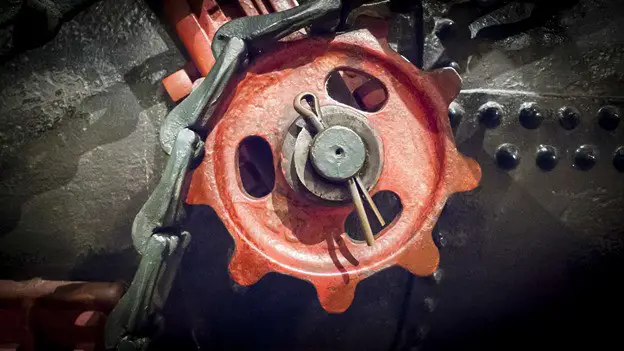It’s not unusual for bolts and other types of fasteners to loosen over time. For example, if a bolt is attached to a giant machine, the vibrations generated by the machine may cause the bolt to come out. However, there are ways to secure bolts in their place, including the most famous one—the use of cotter pins.
But what exactly are cotter pins, how do they work, and what are the different types of cotter pins that you might use in your everyday work? Below, we’ll provide you with a quick guide to cotter pins to make things easier for you.
What Is A Cotter Pin?
In simple terms, a cotter pin is a pin or a wedge that passes through a hole to fix the various components in their place. In the U.S., cotter pins are also known as split pins or cotter keys. Each cotter pin is made out of thick wire with a semicircular cross-section.
Cotter pins are available in different sizes and designs. For example, a split pin is used for locking the bicycle pedal crank with the bottom bracket axle. In most cases, cotter pins are used to stop axial motion along the shaft as they are driven into the holes.
In the end, all cotter pins work on locking mechanisms and can be used for various applications. In a few words, they are easy-to-use fasteners that only demand a drilled bolt, pliers, and a castle nut.

Types Of Cotter Pins
The most common types of cotter pins include split cotter pins, R-pins or R-clips, standard cotter pins, spring cotter pins, barrel cotter pins, dipper cotter pins, straight cotter pins, and the cotter pins with a key.
Split Cotter Pins
The split cotter pins are perhaps the most popular type of cotter pins. These pins are fabricated of semicircular wire, bent over the flat side to make bulbous heads. Split cotter pins are used in pre-drilled parts and secured with a deformable tine. They’re also used as a brake for the clevis pin and can be used for only one-time applications. Split cotter pins are available in different designs depending on the wire bend and connection of the wire.
R-Pins
R-pins, also known as hairpin pins, represent a sprung pin that comes with a straight section bent to make a loop or ring on the head, with a bent section balanced from the straight pin.
The bowed parts of the R-pins are clamped on the outside of the shaft, and the straight part passes through a hole in the shaft that holds the pin in place. You can put your finger in the ring located on the pin’s head and drag the pin out of the hole for ease of use.
Standard Cotter Pins
Standard cotter pins may have a straight or curved design. Due to their large surface, they have a good grip when connecting to other parts through the hand. The standard cotter pins come with two different ends:
- Ones which ends are used to connect the pin with other pins;
- The second type of standard cotter pin uses its end to secure the pin with an object.
Spring Cotter Pins
The spring cotter pins come with a spring that helps to produce tension force for extra gripping power. These pins are usually used for conditions when no other option is available to apply the demanded pressure on the object.
Spring cotter pins have “T” shaped ends, which can be straight or curved depending on their application and use case. For example, more comprehensive diameter objects generally need more surface area, using a straight design. In contrast, smaller diameters result in less surface and provide well curvature around the object.
Barrel Cotter Pins
Barrel cotter pins have a cylindric shape with rounded sides and two different ends—one long side and one short side. These pins are primarily utilized for threaded joints like connecting two pipes or hoses together.
Straight Cotter Pins
The straight cotter pins also look like cylinders with no rounded edges but straight ones. Thanks to their linear design, straight cotter pins are best for securing frequently moving objects since they can’t come off the moving objects pretty quickly.
Final Words
Cotter pins are utilized in a wide variety of applications as a quick locking mechanism that can easily disassemble and replace and prevent the nut from loosening because of vibration. Now that you know the purpose they serve and the different types available on the market find yourself a reliable cotter pins supplier and start working on your next project.

